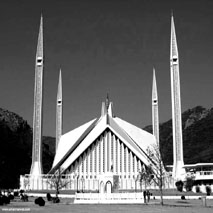Imam Ja’far Al-Sadiq: The fountain head of knowledge
IMAM Jafar as-Sadiq was born on 17th Rabiul-Awwal, 83 AH, in Medina, present-day Saudi Arabia, to the fifth Imam, Imam Muhammad Al Baqir, and Um Farwah.
His appellation was “Al-Sadiq” meaning “The truthful”, as it is narrated that he never lied in his life.
Imam Jafar al-Sadiq was an Imam of the Ahle Bayt as well as a descendant of the first caliph Abu Bakr Siddiq on the side of his mother Umme Farwah bint al-Qasim bin Muhammad bin Abi Bakr. So, Imam Jafar got the honour of lineage from both Ahle Bayt and the first caliph, Hazrat Abu Bakar (R.A). Ja’far al-Sadiq, the sixth Imam, is revered by both Sunni and Shi’a school of thoughts for his deep Islamic scholarship, piety and academic accomplishments. This article offers a brief sketch of his life, character and achievements.
Although the Imam is most renowned as the initiator of Shi’a Islamic fiqh, called Ja’fari jurisprudence, his extensive knowledge in a variety of fields had a great academic impact on the people of his time, Tawhid al- Mufaddal, a compilation of his teachings, reflected his extensive knowledge, particularly on the wonders of creation.
The holy Imam was the fountainhead of knowledge. Since his childhood, he started evincing remarkable scholarship both in temporal as well as spiritual affairs.
It is recorded in various books, written on his intellectual achievements, that when Imam As-Sadiq was a young boy, he used to come to the schools and Madrasas founded by his father the 5th Imam and instead of learning as many other youngsters and older pupil did, he used to discuss serious matters of Fiqh and Jurisprudence with much older students of the Madrasas.
In one such discourse when he was only 11 years old, when he entered a class room where pupils were discussing on the subject of astronomy, he pointed out to the surprise of everyone except his own father, that the earth cannot be flat, because of the way the sun rises in the East and sets in the west and day and night change in 24 hours, it cannot be possible.
In his opinion the earth must be round; otherwise this would not have happened in such a precise manner. All the students were astonished but his father smiled and said nothing.
The versatility and genius of Imam Ja’far as-Sadiq in all branches of knowledge was acclaimed not only in Islamic world but also beyond, which attracted students from far-off places towards him till the strength of his disciples, according to some accounts, had reached four thousand.
The scholars and experts in Divine Law have quoted many ahadith (traditions) from Imam Ja’far as-Sadiq. His disciples compiled hundred of books on various branches of science and arts. Other than fiqh (Islamic jurisprudence), hadith (tradition), tafsir (exegesis of the Holy Qur’an), etc., the Holy Imam also imparted mathematics and chemistry to some of his disciples.
Jabir ibn Hayyan at-Tusi, a famous scholar of mathematics, was one of the Imam’s disciples who benefited from the Imam’s knowledge and guidance and was able to write four hundred books on different subjects.
It is also an undeniable historical truth that all the great scholars of Islam were indebted for their learning to the very presence of the Ahlu’l-bayt who were the fountain of knowledge and learning for all.
Allamah Shibli writes in his book Siratu’n-Nu‘man: “Abu Hanifah remained for a considerable period in the attendance of Imam Ja’far as-Sadiq, acquiring from him a great deal of precious research on fiqh and hadith.
Moreover, it is also mentioned in the books, written on the life of Imam Ja’far sadiq(A.S) that he instructed many scholars in different fields of the intellectual and transmitted sciences, such as Zurarah ibn A’yan, Muhammad ibn Muslim, Muminu ‘t-Taq, Hisham ibn al-Hakam, Aban ibn Taghlib, Hisham ibn Salim, Hurayz, Hisham al-Kalbi an-Nassabah and Jabir ibn Hayyan (the alchemist).
Even some important Sunni scholars such as Sufyan ath-Thawri, al-Qadi as-Sukuni, al-Qadi Abu ‘1-Bakhtari, and others, had the honour of being his students. It is said that his classes and sessions of instructions produced four thousand scholars of hadith and other sciences.
Imam devoted his whole life to the cause of religious preaching and propagation of the teachings of the Holy Prophet and never strove for power.
Because of his great knowledge and fine teaching, the people gathered around him, giving devotion and respect that was his due. This excited the envy of the Abbasid ruler al-Mansur ad-Dawaniqi, who fearing the popularity of the Imam, decided to do away with him. According to historians, Imam al-Sadiq (a) was martyred by the poisonous grapes Mansur had him eat. Um Hamidah is quoted as saying, “On his deathbed, the holy Imam gathered all his relatives.
When everybody showed up, he said, ‘our intercession does not go to somebody who belittles the daily prayers and is heedless to it. Imam al-al-Sadiq was martyred on the 25th of Shawwal in the year 148 A.H. at the age of 63.
— The writer is contributing columnist, based in Quetta, Balochistan.










